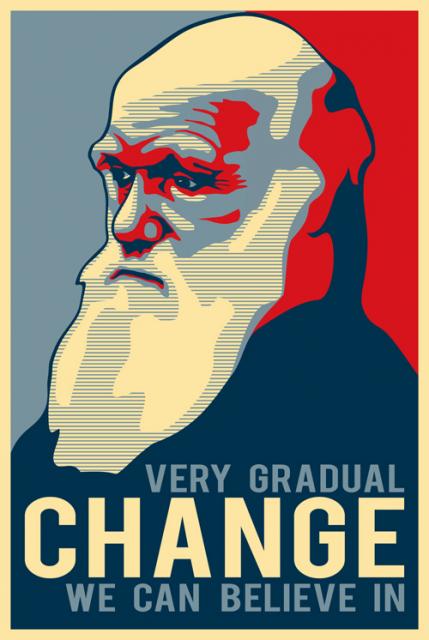 The last 50 years have seen a massive expansion of the domain of Darwinian evolutionary theory.
The last 50 years have seen a massive expansion of the domain of Darwinian evolutionary theory.Though the idea that Darwin's ideas could be usefully applied to subject areas beyond the evolution of species over geological timescales has been around ever since Darwin's era, it wasn't until the 1970s that systematic exploration of the area began.
Karl Popper applied Darwinism to science. B.F. Skinner applied Darwinism to individual learning. Donald Campbell applied it to social learning. In 1976, Richard Dawkins devoted a chapter in "The Selfish Gene" to the idea that culture evolved.
Then things really began to get going. In the 1980s several serious books by scientists on the topic of cultural evolution appeared. Gerald Edelman discovered Darwinian evolution in the immune system - and in low-level brain structures - such as neurons and synapses. William Calvin also did pioneering work on Darwinian evolution in the brain.
Darwinian evolutionary theory was broadly applied to social sciences, with economics - often regarded as the most "scientific" of the social sciences - generally leading the way. Not things like evolutionary psychology - which is still mostly obsessed with DNA genes - but rather Darwinian theories based on cultural variation.
It now seems fairly clear that the basic concepts of Darwinian evolutionary theory, such as adaptation and drift, apply widely including to many physical and chemical systems outside of biology. There's some debate on whether we should call it "Darwinism" - partly because of the scale of the developments since Darwin's era. However, this is a relatively minor terminological skirmish; the point is that Darwin's basic principles apply.
Self-organizing systems were once seen as a challenge to Darwinism from physics. For example, the forms of tree branches and roots do indeed resemble the patterns made by lightning strikes and fractal drainage basins - and some speculated that the same physical principles were responsible for both. However an examination of how these systems are formed shows that the Darwinian principles of descent with modification and extinction is involved in lightning strikes and fractal drainage basins. Fractal drainage patterns adaptively fit the drainage basins that contain them - due to Darwinian adaptation. What started off as looking like an invasion of biology from physics has turned into a battle with territory being lost and gained on both sides.
Darwinian evolutionary theory also applies to observation selection effects - which are an important area of science. This is another case of Darwin invading territory which was once thought to belong to physics.
We also understand why Darwinian evolutionary theory is so broadly applicable. Darwinian evolutionary theory is based on the production of new forms from old ones via copying and the elimination of unfit ones. It depends on mutations being small. A theory with no restraints on the type of mutation is consistent with any sort of observation, and so is useless. We can see that copying is ubiquitous in nature. The observed fact that physics is simple and local works to keep mutation small. There's also a law of conservation of information. Information never comes out of nowhere - it always comes from somewhere else. Under these circumstances, an evolutionary theory along the general lines that Darwin described is practically bound to apply. Design can't come out of nowhere - because the universe is closed. Instead it evolves gradually.
Once the idea that the domain of Darwinian evolutionary theory was expanding dramatically took root in the minds of scientists, some questions developed:
- How can we best characterise the general theory that applies to all these domains?
- What are the limits of evolutionary theory? i.e. when does it turn into dynamical systems theory?
A recent paper in Nature describes this revolution. It's written by a bunch of developmental biologists - who use their own terminology and have their own perspective on the issue. It also features some rather embarrassing straw man attacks on what they call "Standard Evolutionary Theory". However it is possible to make out that some of their points are a watered-down version of the one I am describing here. My coverage of that paper is here.
References
- Tyler, Tim (2013) The limits of evolutionary theory
- Tyler, Tim (2013) The waves of Darwinism
- Tyler, Tim (2013) Universal Darwinism
- Tyler, Tim (2013) Darwinian physics
- Tyler, Tim (2013) Observation of the observable










No comments:
Post a Comment